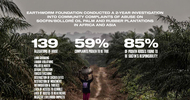 Permanent Secretary in the Ministry of Lands, Agriculture, Fisheries, Water and Rural Development Professor Obert JiriThe Sunday Mail | 10 November 2025
Permanent Secretary in the Ministry of Lands, Agriculture, Fisheries, Water and Rural Development Professor Obert JiriThe Sunday Mail | 10 November 2025Zimbabwe secures US$1,5bn for dams, irrigation and power projects
by Nokuthula Dube
Zimbabwe has secured more than US$1,5 billion in funding to develop major dam projects, including Musami Dam, which will supply bulk water to the country’s new capital city under development in Mt Hampden, and completion of the Gwayi-Shangani pipeline, among several other key infrastructure projects.
The deals also cover water supply pipelines to major towns, hydroelectricity generation and irrigation development.
The funding was raised during the Zimbabwe Irrigation Investment Conference held in Harare on July 5 this year.
The ambitious dam projects are expected to expand the country’s irrigated land from the current 217 000 hectares (ha) to approximately 496 000ha, guaranteeing national food security and resilience against climate change.
Zimbabwe requires 350 000ha of irrigated land to produce about 1,8 million tonnes of grain and attain food self-sufficiency.
The same hectarage also makes it possible for the country to produce 1,4 million tonnes of wheat, ultimately making it a net exporter of the cereal.
In an Interview with The Sunday Mail, Permanent Secretary in the Ministry of Lands, Agriculture, Fisheries, Water and Rural Development Professor Obert Jiri said the country had secured a significant number of agreements to expand its irrigated agricultural land, a key step in ensuring food security and climate resilience.
“Memoranda of understanding (MoU) worth about US$1,5 billion have been concluded on about 10 projects,” he said.
“The concluded MoU projects target the construction of new dams, water supply pipelines to major towns, hydroelectricity generation and irrigation development.
“Efforts are underway to start implementing the projects.
“Constructing additional dams is essential for achieving sustainable development and ensuring future water and energy security.”
Among the planned projects are the US$600 million Runde-Tende Dam and pipeline to Messina, South Africa; the US$40 million Manhize-Munyati Dam; and the Glassblock Dam in Insiza, which will cost US$140 000.
Also planned are Musami Dam and a pipeline for bulk water supply to the new capital at a cost of US$300 million, as well as a US$90 million investment in the Gairezi hydropower plant.
Other hydropower projects will be developed at Gwayi-Shangani, Kudu and Osbourne dams.
The programme will also include the design and manufacturing of electrolyser systems to enhance power production across several dams.
Prof Jiri said the first agreement, worth US$172 million, was signed with Valley Irrigation to provide centre pivot irrigation systems for 23 000ha, a development expected to enhance Zimbabwe’s irrigation infrastructure.
A second agreement with Spanish firm Grupo Charmatin, facilitated by Munda Wedu Private Limited, initially provided €51 million for developing 12 725ha of irrigated land.
The funding was later increased to €75 million to cover more hectares.
Another deal with Lindsay Zimmatic will add US$100 million for irrigation of an additional 20 000ha.
He said development of the new dams will accelerate Zimbabwe’s drive towards expanding land under irrigation.
“The projected national irrigation potential is 2,2 million hectares from the more than 10 600 dams and water bodies,” added Prof Jiri.
“Agricultural production that is anchored in irrigation is both reliable and highly productive. The projected area to be developed is 496 000ha, made up of the current developed and functional 217 000ha, and 275 000ha additional area required during summer, which is meant to increase the area available for maize production from the current average of 75 000ha to 350 000ha, which is the minimum irrigated area needed to assure the nation of food self-sufficiency.
“An estimated production of 1,8 million tonnes of maize is anticipated from this targeted 350 000ha during summer, and an additional minimum of 1,4 million tonnes of wheat will be produced in winter, making Zimbabwe a net exporter of wheat, which production is adequate to feed the whole nation.”
The country’s national functional area under irrigation increased from 175 000ha prior to 2020 to the current 217 000ha.
Overall, under the Second Republic, the area under irrigation has expanded by 24 percent, representing the fastest pace since independence.
Out of the 217 000ha, 141 000ha is available for cereals, tobacco and other crops, while 75 000ha was provided for maize production during the 2023/2024 summer season.











